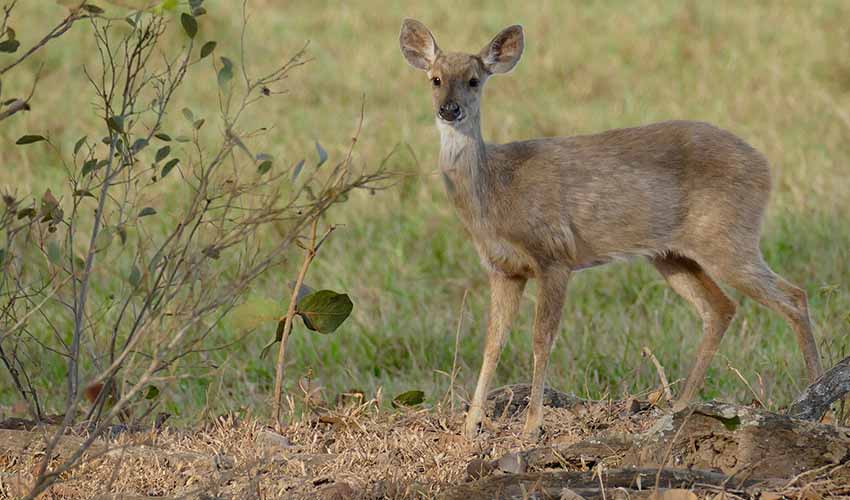Mazama – Brocket deer
Deers that can bark like dogs? Yes, they can!
The genus Mazama, commonly known as brocket deer, includes a group of small, shy, and elusive deer species that inhabit the forests and dense vegetation of Central and South America. Unlike their larger, more well-known cousins like white-tailed or mule deer, brocket deer are built for stealth and secrecy. Their bodies are compact, their legs short and sturdy, and their behavior cautious—perfectly suited for life in the underbrush. They are named after their “brocket,” a term referring to the simple, unbranched antlers that males grow each year. These short antlers set them apart from other deer species and reflect their less confrontational, more solitary nature.
There are several species within the Mazama genus, including the red brocket, gray brocket, Amazonian brown brocket, and others, each varying slightly in size, color, and habitat preference. What unites them all is their secretive lifestyle. These deer are solitary, except during mating season or when a mother is caring for her fawn. They prefer dense forests, cloud forests, or tropical lowlands where they can move quietly through thick vegetation without being seen. Their coloring, which ranges from reddish-brown to gray, helps them blend perfectly into the forest floor, making them hard to spot, even for experienced wildlife trackers.
Brocket deer are herbivores, feeding on a variety of forest vegetation including leaves, fruits, seeds, and tender shoots. In areas with seasonal fruiting, they are important seed dispersers, helping to regenerate forest plant life. Unlike some deer that graze in open fields, brockets forage under cover, using their strong necks to reach for low branches and fallen fruit. They’re mostly active during the early morning and late afternoon (crepuscular), avoiding predators like jaguars, pumas, and large birds of prey by sticking close to thick cover. When threatened, they flee with sudden bursts of speed into dense foliage, often leaving no trace behind.
Species in this genus
Red brocket deer
Instead of fleeing immediately when threatened, they often freeze completely still
Gray brocket
Known to freeze in place when startled, relying on camouflage rather than flight until the last moment



